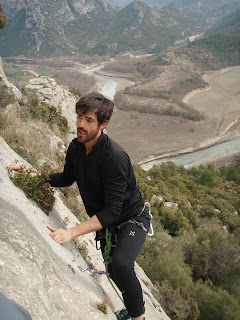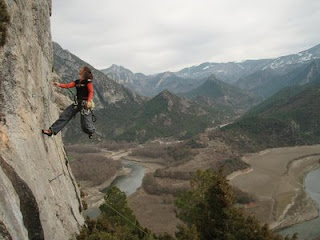
This w-end saw some of our ambition come true as we headed for Montrebei. The naming is very confusing in this part of the world, so to get is straight, the pre-Pyrenees range going from Terradets gorge to Montrebei gorge is called Montsec Oeste or Montsec d'Ares, it includes such walls as Pared de Begasses (Terradets), Font Freda, Pared de Ager, and finally Pared de Cataluña (Montrebei). I suppose that the range stops an Pared de Cataluña (to the right in the picture above, a closer look in the picture below), although I am not exactly certain.

Nevertheless, on the other side of the gorge there is Pared de Aragon, another equally big wall, already part of Aragon, but also part of Montrebei from what i gather (picture below). Cataluña or Aragon, both walls form a gorge and are very attractive to a climber's eye. They involve around 400 meters of vertical to overhanging terrain, mainly adventure style, with numerous aid and trad lines going up this immense sea of limestone. Moreover, these walls go on for kilometers on one side of the gorge and another. Yes, this country is a rock paradise, and please correct me if anyone is more advanced than myself with the naming game!

Anyway, we climbed a route on Pared de Cataluña, called Diedro Gris. It is one of the two easiest routes up this impressive wall whose description mercifully does not include the use of pitons or any other extended aiding technique. We even did not include the recommended friend 4 in our material list after several climbing parties told us we did not really need it on the route (and true, we did not). The approach starts with the walk-in down a spectacular man-made path through the gorge, a popular hiking destination for its own sake. It looks something like this (path in the middle left of the picture) :

The full view of the walls comes in after the gorge (when approaching from the North), displayed in the inverse order in this post. Then the business of actually getting to the top of these monsters has to begin, and it is as intimidating or more as it looks, even for the easiest route out there! Also, the Cataluña wall is in the shade until at least two, so our first pitches were pretty cold, painful and laborious. Here is Cathy with full clothing following the 6th pitch, another very impressive 5+. That is basically when we began taking pictures, meaning that sun finally hit us and our mood significantly improved.

Below is Cathy two more pitches up, getting slowly undressed and starting to enjoy the experience, exposure, and view, the perks of the climbing trade. I liked the second half of the climb very much. The 6a crux of the route is an amazing side-pull-bridge-and-don't-get-scared roof on gear, nicely led by Cath just before this pic, hence the big grin:

And, this is the view from the top, with snow-capped Pyrenees fading through the over-exposure of my camera - but they are there, waiting for the conqueror, god, or just a lost tourist, believe me, i know!

PS - some pictures (the best ones) are courtesy of Cathy


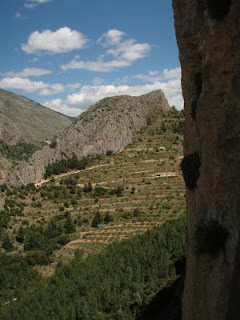

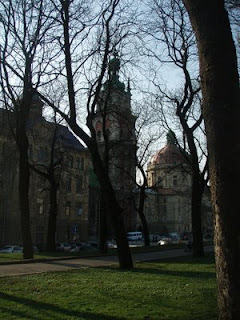




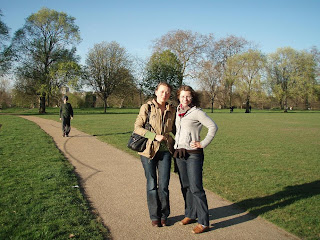







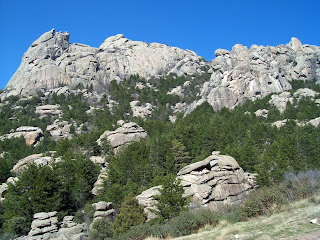




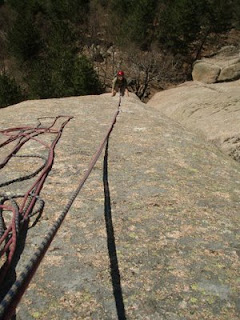
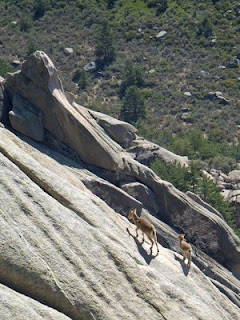





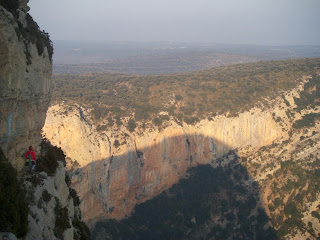




 Here is Cathy still believing it is spring:
Here is Cathy still believing it is spring: And Gonzalo showing us how it is done:
And Gonzalo showing us how it is done: